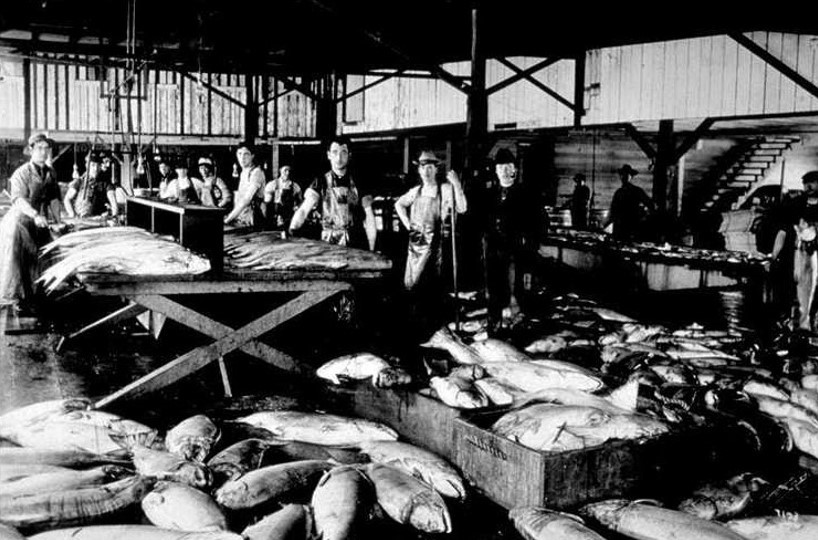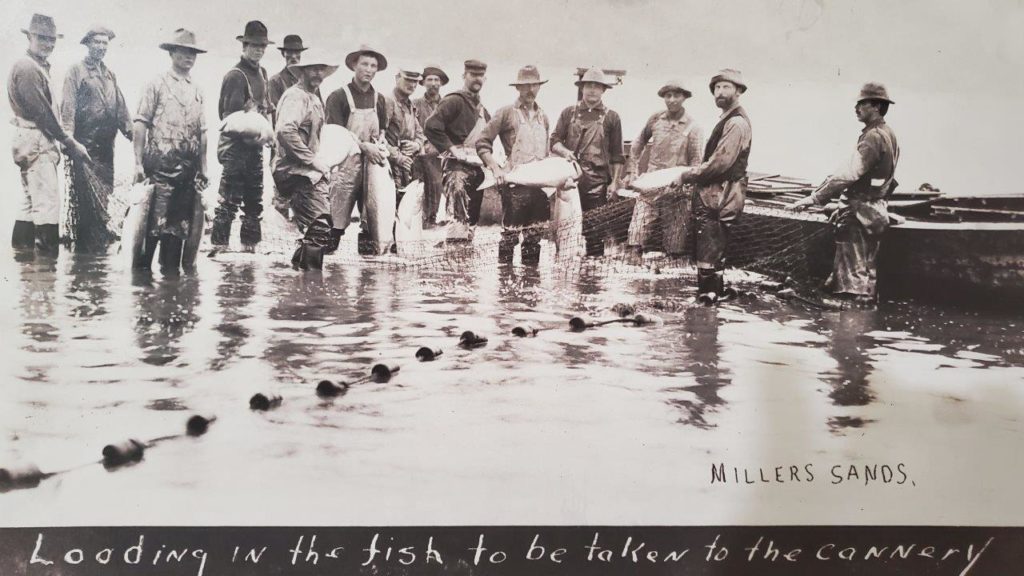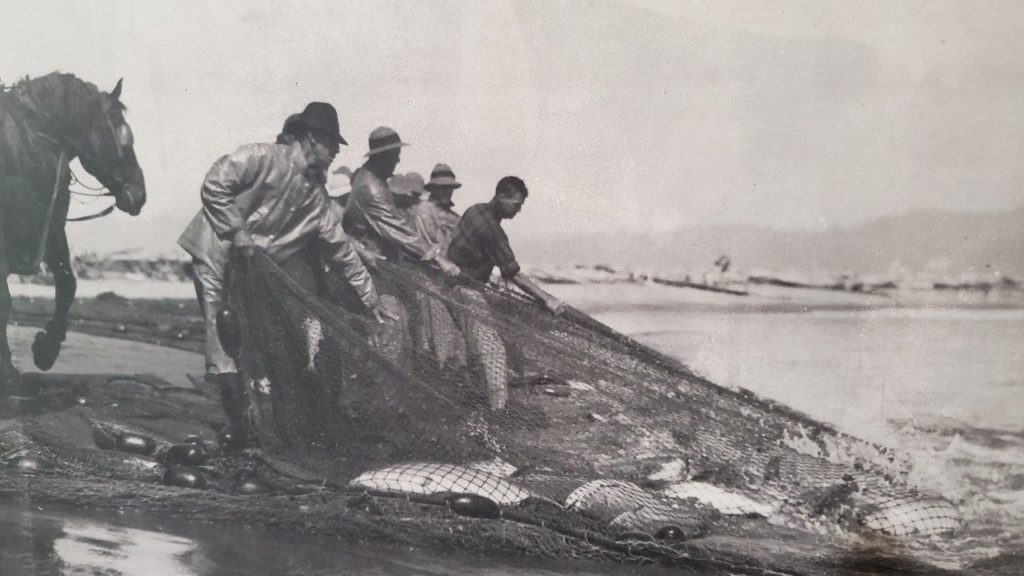Despite decades of work and billions of dollars, Chinook salmon are still headed in the wrong direction.
By Ed Wickersham and Jack Tipping

Columbia River Chinook salmon were historically abundant and large fish. Beginning in the late 1800s and continuing to present day, millions of these once abundant salmon have been commercially over harvested. Most of the salmon populations in the Pacific Northwest were listed on the Endangered Species Act (ESA) more than 30 years ago, yet there has been no significant progress toward recovery. Much of the scientific work has focused on habitat improvement, including significant alterations to our hydro system. While all are commendable actions with hundreds of billions of dollars having been spent, it has resulted in few positive results for ESA-listed fish. If you don’t get salmon back to their home waters, it is all for nothing.
In 1980, W. E. Ricker published a study showing that Chinook salmon size in the Pacific Northwest had decreased by 50 percent or more from about 1920 to the mid-1970s, and age of fish had also diminished. This study showed that ocean harvest of immature fish, along with gill nets that have devastating effects on larger sized fish, were responsible for this decline. A more recent study concluded that proportions of older age classes of Chinook had decreased in most regions.


Fast forward to 2021, these studies have been largely ignored and now nearly all stocks of Columbia River Chinook salmon are listed under the Endangered Species Act. Of all the actions taken, there has been little attention given to ocean harvest along the Pacific Coast from California to Alaska. In 2019, according to the Pacific Marine Fisheries Commission, a whopping 953,000 Chinook salmon were harvested between the mainstem Columbia River and the Pacific Ocean up to Southeast Alaska.
To determine if age and size of Chinook salmon has continued to decline, a recent analysis of Coded Wire Tags (CWT) was utilized to examine harvest of hatchery Chinook from various Columbia River hatcheries. Releases of salmon smolts between 2014-15 were the subject of the analysis.
CWTs are small pieces of wire inscribed with a code that can be injected in the snout of juvenile salmon. When salmon are subsequently recovered, they are scanned for presence of a tag, and if present, the tag is removed and sent to a lab and the information is entered into a database. Although CWTs are primarily used on hatchery origin fish, they can still provide an assessment of wild Chinook salmon catch, primarily because wild and hatchery stocks intermingle throughout their migration.
The CWT database was used to determine mean age-at-hatchery return from the 1970s compared to more recent years. Average ages were determined for year classes by weighted returns to hatcheries and spawning grounds for Age 3 and older fish. The CWT database showed that average Chinook salmon age-at-return declined from 4.13 years in the 1970s to 3.75 years more recently, a difference of nearly five months. Since fish grow with age, today’s Chinook are smaller and therefore, less productive than those of a few decades ago.
In the ocean, according to the Pacific Fishery Management Council (PFMC), less than 100 commercial troll fishermen in Washington harvested an average of 46,600 Chinook salmon per year from 2016 to 2019. Further, based on fish prices and mean fish size, troll-caught Chinook salmon brought an average of $85 per fish. Alarmingly, bycatch mortality (undersized fish, etc.) was estimated at 11,500 fish for 2019 and much of the troll harvest consisted of immature Chinook salmon, averaging 6.2 to 11.7 pounds. We did an economic analysis of the Washington troll fishery using hatchery production costs as a metric. Results showed it would require about 9,320,000 juveniles weighing 372,800 pounds at a cost of $5.6 million to produce a harvest of 46,600 fish. Since the troll harvest valuation was $2.1 million, the troll fishery cost nearly three times more than it generated. Society has spent billions of dollars to save wild Chinook, making those fish incredibly expensive for a fishery that sells them for $85 each. Washington trollers have adamantly opposed moving to more selective fisheries, suggesting that doing so would be the demise of their fishery.
Relatively few Chinook salmon from the lower Columbia River were caught by recreational anglers off the Washington coast. The vast majority of Chinook salmon were caught by commercial fisheries off the coasts of Canada and Alaska. Likewise, most of the ocean recreational catch is off the coasts of Canada and Alaska, almost all of which is non-selective.
In summary, it is clear that ocean harvest rates must be addressed if Chinook salmon are to be recovered in Washington State. We applaud the recent decision by Canada to greatly reduce their commercial harvest of Chinook salmon off the Pacific coast. In the United States, the agencies responsible for the recovery of endangered Chinook salmon need to end antiquated commercial fishing methods that harvest immature and wild Chinook on their feeding grounds. By reducing commercial ocean catch and implementing selective fisheries, the numbers of wild Chinook salmon returning to their natal streams will begin to increase which would be a good first step towards recovery. Not only will the number of fish returning to the spawning grounds increase but given time they will be older and larger salmon as well.
If we are to save Chinook salmon and the animals that depend on them such as Southern Resident Killer Whales, harvest methods that effectively target hatchery stocks and protect wild fish must be implemented. To ensure long term recovery we must continue to work on improving habitat, the hydro system, and our hatchery management of stocks. However, if we do not change our current harvest management, those other vital actions are in vain.
Ed Wickersham worked more than 30 years in Fish and Wildlife Law Enforcement, including three years with NOAA monitoring foreign fishing fleets in the north Pacific and Bering Sea. During his career, much of his work included monitoring and enforcement of commercial and recreational fisheries, tribal and non-tribal, inland and marine, domestic, and foreign from Alaska to California including Puget Sound and the Columbia River. He retired in 2002 after almost 25 years as a Special Agent with the U.S. Fish and Wildlife Service.
Jack Tipping worked 30 years for Washington Department. of Fish and Wildlife as a fish biologist, mostly involved with hatchery research to improve fish survival. He has authored or co-authored more than 40 journal publications and is a past Associate Editor of North American Journal of Aquaculture. He retired from WDFW in 2005.








